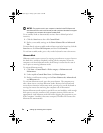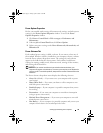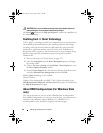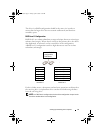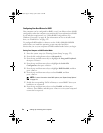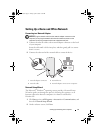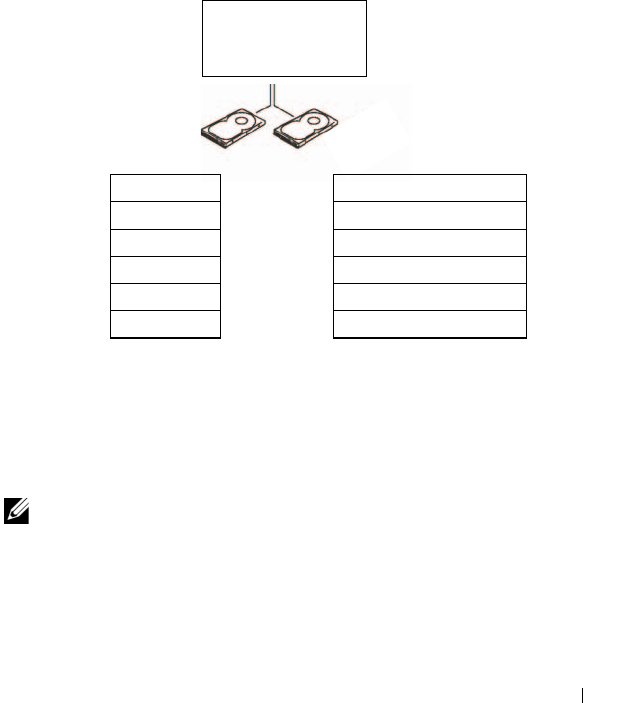
Setting Up and Using Your Computer 41
The drives in a RAID configuration should be the same size in order to
ensure that the larger drive does not contain unallocated (and therefore
unusable) space.
RAID Level 1 Configuration
RAID level 1 uses a data-redundancy storage technique known as mirroring to
enhance data integrity. When data is written to the primary drive, the data is
also duplicated, or mirrored, on the second drive in the configuration.
A RAID level 1 configuration sacrifices high data-access rates for its data
redundancy advantages.
If a drive failure occurs, subsequent read and write operations are directed to
the surviving drive. A replacement drive can then be rebuilt using the data
from the surviving drive.
NOTE: In a RAID level 1 configuration, the size of the configuration is equal to the
size of the smallest drive in the configuration.
hard drive 1
segment 1
segment 2
segment 3
hard drive 2
segment 4
segment 5
segment 6
segment 1 duplicated
segment 2 duplicated
segment 3 duplicated
segment 4 duplicated
segment 5 duplicated
segment 6 duplicated
serial ATA RAID
configured for
RAID level 1
book.book Page 41 Friday, April 4, 2008 12:10 PM




